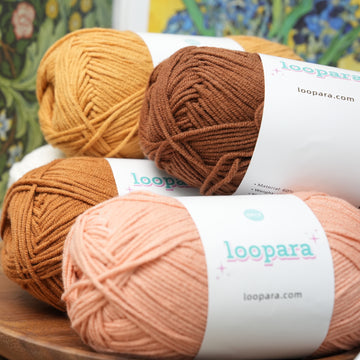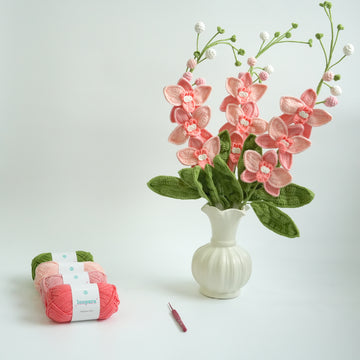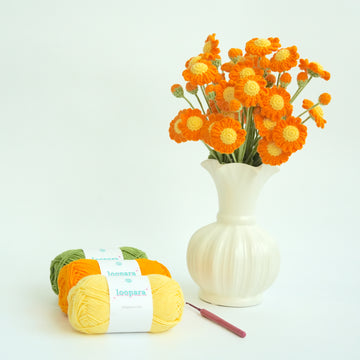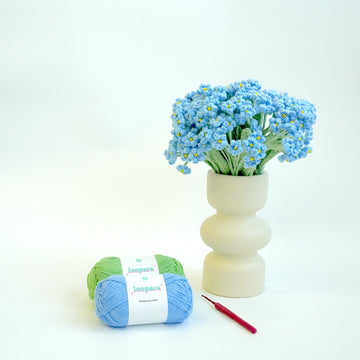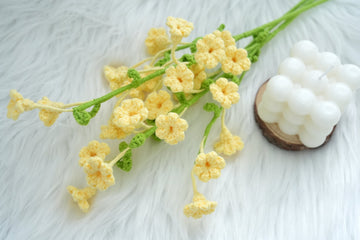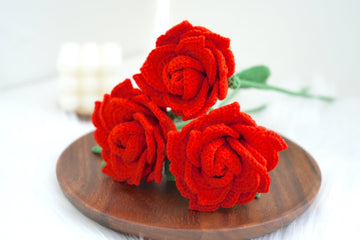Finding the right type of yarn can have a big impact on the look and feel of your finished crochet project. So what’s the best yarn for crochet bags?
The answer will depend on what you want from your bag. But that doesn’t mean you’re on your own!
In this article, we’ll share some factors to consider when you’re picking your yarn. And we’ll walk you through the pros and cons of some of our favorite options.
What do you need from your bag?
Most crochet bags are totes, but we’ve also seen some impressive crochet handbags. Whatever type of bag you’re making, you want a yarn with properties that will allow it to be used the way you want.
Here are some factors to consider.
1. Strength
Are you planning to use your bag every day, or just now and again? Will you be carrying heavier items like books or shoes? Or do you just want something for a few papers or lighter weight groceries?
The more weight you want to carry, the stronger the yarn will need to be. That means looking at both the fibers from which it’s made, and its construction.
Most tote bags are made with yarns weighted 3 (light) or above. This is sometimes referred to as DK weight. The heavier the yarn, the thicker and stronger it will generally be. A closed stitch will help give the crocheted fabric strength too.
Having said that, lighter weight yarns can be good for string bags that will fold down easily. So if you’re making something for occasional use, they can be worth considering. You’ll probably find you need to add a liner, though.
In most cases, higher ply yarns (those made from multiple cords) will be stronger than single ply. But if you’re felting wool, you’ll need single ply, and the felting process will give it strength.
2. Elasticity
All crochet bags will stretch to some extent if you’re carrying heavier items. But you can avoid excessive sagging by choosing a less stretchy yarn.
Cotton and hemp, for example, are much less prone to stretching than wool or acrylic. Felted is better than ordinary wool, because the felting process reduces the fibers’ natural elasticity.
But if your heart is set on using a yarn with more stretch, it’s not impossible to pull this off. A good solution is to line the bag with a more robust fabric that can take the strain.
3. Washability
Most bags are going to be with you when you’re out and about. And that means that they’ll probably get grubby over time.
Choosing a yarn that will withstand washing, then, is a wise choice. If you want your bag to feature color, look for an option that’s colorfast too. Quite apart from standing up to the laundry, you don’t want dye bleeding onto your clothes if you’re caught in an unexpected shower!
Cotton yarns are usually good at holding their color. Mercerised cotton is particularly good, especially if you want to dye the item yourself.
4. Response to friction
A crochet bag will inevitably find itself rubbing up against other things. A strap will rub on a shoulder, and the body of the bag on your hip as you walk. And unless you line it, the fabric will rub against the contents.
With some fabrics, that friction will result in pilling – tiny balls on the surface. To help avoid this, look for yarns with multiple plies and smooth, tightly twisted fibers.
5. Ease to work with
The downside of strong, more rigid yarns is that they can be tough on your hands when crocheting. Yarns with smoother fibers tend to be easier to use, because they glide more readily through the crochet hook.
6. Sustainability
Different fibers have different impacts on our planet.
Acrylic, for example, is made from fossil fuels, and it isn’t biodegradable. And pretty much all synthetic fibers – acrylic, polyester, nylon – will release microplastics into the water supply when they’re washed.
Contrast that with natural fibers like hemp and raffia, which grow quickly and degrade without releasing toxic chemicals.
When it comes to cotton, different types can have different environmental impacts. Cotton yarns made from recycled fibers can save materials going into landfill. But new cotton requires both warm temperatures and lots of water to grow.
And non-organically grown cotton accounts for an astonishing half of the world’s pesticide use.
Best Yarn for Crochet Bags
Only you can decide which yarn is best for your crochet bag project. To help make your decision, we’ve set out some good options, together with their pros and cons.
1. Cotton

Cotton has several properties that make it a good choice for crochet bags. It’s strong, resilient, washable, won’t stretch much, and holds color well. And you’ll get good stitch definition too.
Look for a yarn with a weight of 3 or above to ensure it will be strong enough for your bag. Chunkier yarns will generally enable you to complete your project quicker too.
Mercerised cotton is a good choice if you’re planning to dye your yarn yourself. It’s great at holding color and has an attractive sheen. If you want something softer, a non-mercerised cotton will work better.
Cotton tends to be a little more expensive than synthetic blends, though. Look for recycled or organic yarns for a more planet-friendly option.
Here is a bag crochet with our 5 Ply Milk Cotton Yarn

Check our 5 Ply Milk Cotton Yarn.
2. Linen
Linen is another natural fiber that shares many of the properties of cotton. It’s strong (though not as strong as cotton), inelastic, washable, hypoallergenic and biodegradable.
Linen holds color well and will stand up to regular washing. And while new linen crochet can be quite stiff, it will soften with each wash.
But production requires similar amounts of water to cotton. Look out for organic options, which don’t use pesticides.
A linen-cotton blend will give you more strength than linen alone. Whether you choose pure or blended linen, look for a yarn with a weight of at least 3 (light or DK). Yarns with multiple plies will be stronger too.
3. Hemp
Hemp has a lot to recommend it as a yarn for crochet bags. It’s got all the advantages of cotton – it’s strong, not stretchy, hard-wearing, washable, hypoallergenic, and biodegradable.
But its production requires much less water. And because it can be grown in most climates, it doesn’t have to be transported over long distances either. Some hemp is grown using pesticides, however, so look for organic options.
You can use hemp in its natural shade – a sophisticated pale grey – or there are plenty of dyed yarns on the market. If sustainability is an important consideration for you, you’ll find a good range of hemp yarns made with organic dyes.
As always, look for yarns weighted at least 3, and with at least 2-ply.
4. Jute
Jute is another natural fiber, and it’s both strong and versatile.
It comes from the Corchorus plant and requires little rainwater, no fertilizer and no pesticides to grow. It’s biodegradable too, giving it great environmental credentials.
But it is coarse, so it can be hard on your hands when you’re crocheting. A simple solution is to wear a pair of gloves as you work. Washing will also soften it up a bit.
You may also find it sheds small fibers as you crochet – so be prepared to get out the dustpan and brush when you’ve finished making your bag! The good news is the shedding will stop when the fibers aren’t being manipulated.
Note that jute doesn’t come in standard yarn weights. If you want to try crocheting with it, look for jute packaging twine – it’s both cheap and effective. To get brighter shades, you may need to dye it yourself.
5. Raffia
Raffia is made from the leaves of the raffia palm tree, and it’s another good option for crochet bags. It’s strong, holds its shape well, and is water-repellent. It also has an attractive sheen and is available in an array of colors. And it’s biodegradable too.
It works brilliantly for tote bags, and it’s sturdy enough to be used for baskets too.
6. Wool
Standard wool yarn isn’t the best choice for bags because it’s pretty stretchy. Even bags with lighter use are likely to lose their shape quickly.
But that doesn’t mean that wool is a complete no-no for crochet bags. Felting the wool after you’ve crocheted it will make it much stronger. This just means putting it in a hot wash. This will shrink the fibers so that the crochet holes will disappear.
You can get some gorgeous effects with felted wool bags. They’re beautifully soft too.
But the yarn does need to be 100 per cent wool, rather than a blend – so it can be pricey.
Summing up: the best yarn for crochet bags
The best yarns for crochet bags combine strength, ease of use, and the ability to hold their color and shape.
Generally speaking, natural fibers work better than synthetic ones – and they can be more environmentally friendly too. Recycled or organic cotton, linen, hemp and raffia are great choices.
Jute can work brilliantly too, if you’re prepared for some harder work manipulating the yarn. And felted wool is a good option if you want a bag with a softer texture.


